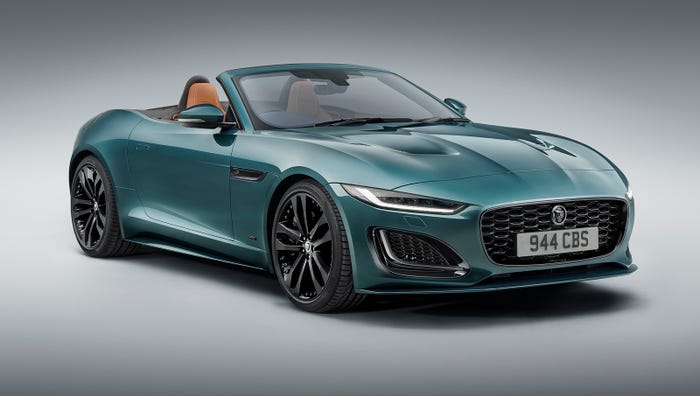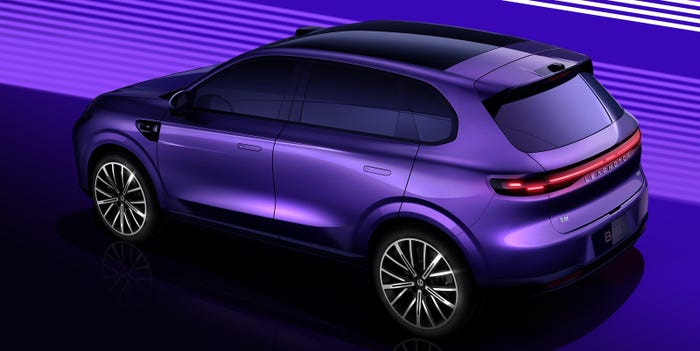AlixPartners: Legacy OEMs Should Worry About China’s Edge in Tech
AlixPartners says automakers should focus more on ADAS technology than ride and handling.

Have we reached an era in the U.S. in which consumers are going to begin making car-buying decisions specifically around advanced driver assistance systems over price, styling, ride, handling, power and telematics user interface?
AlixPartners, presenting its annual Global Automotive Outlook report, suggests legacy automakers should pay close attention to trends in China not only for reading that market but also as a foreshadowing of where the U.S. market is headed.
“While the industry has been focusing on Tesla, now is the time to prepare for future disruptive competition from Chinese brands,” says Mark Wakefield, global co-Leader, Automotive and Industrial Practice.
As evidence, say Wakefield and the firm’s Shanghai-based business lead, Stephen Dyer, Chinese brands will likely outsell foreign brands in China this year for the first time in decades, before Western brands became the force they have been in China since the 1970s. AlixPartners also forecasts that Chinese brands will have 65% of their home market by 2030.
AlixPartners says Chinese brands such as BYD, Zeekr and Xpeng have been climbing in sales and market share at home because they are doing a better job than Western automakers in delivering new tech features to upwardly mobile tech-oriented Chinese consumers with updates coming at a faster pace. The highest-ranked foreign brand for “tech features” is BMW, placing second after Zeekr and ahead of BYD and Xpeng.
Chinese brands are providing higher ADAS content than non-China brands in the same price segments. In the entry-level price segment in China, 57% of Chinese brands come with ADAS features, while just 15% of competing non-Chinese brands offer similar tech. Chinese brands beat non-Chinese brands on ADAS features in every segment until they achieve parity in the luxury category.
No Chinese automakers are actively selling in the U.S. yet. BYD, for one, has made noises about entering the U.S. market for more than 15 years, but so far its presence in the country is limited to buses, trucks and forklifts.
It remains to be seen if Chinese automakers will ever be able to crack the U.S. market and make inroads as they have in Europe. Until now, products showcased at auto shows from Chinese companies have been lacking in build quality and modern design aesthetics. Perhaps even more crucial, the companies have been reluctant to trust Western auto executives who know the market better with sales, marketing and distribution decisions. And now they are facing political headwinds from mounting tension between Washington and Beijing.
China is finding success, however, with its electric vehicles in Europe with improved safety and quality ratings and lower prices. They are especially making progress with corporate and rental fleets. German car-rental agency Sixt, for example, recently ordered 100,000 BYD EVs for its European fleets. Chinese automaker Aiways targets selling 30,000 EVs in Europe in 2023, up from about 5,000 in 2022. The sales are adding up.
Estimates vary, but BEVs are expected to account for 40% to 50% of European sales by 2030. And some estimates are that Chinese automakers will account for between 12% and 20% of those sales by focusing on non-luxury segments, which many European automakers are willing to sacrifice because of the scant or nonexistent profits derived from vehicles priced below $25,000 because of their higher, compared with China, labor and healthcare costs.
While keeping up with technology trends is undeniably important, the urgency with which U.S. automakers must worry about Chinese automakers in their home market is very much up for debate.
According to J.D. Power’s 2022 U.S. Mobility Confidence Index (MCI) Study, consumer interest in ADAS is nowhere close to where it will need to be to bring mainstream vehicle buyers into the market for fully automated passenger cars and trucks in the years ahead.
The MCI Study, conducted jointly by J.D. Power, Partners for Automated Vehicle Education and the MIT Advanced Vehicle Technology Consortium, suggests that not only is consumer understanding of automated vehicles low, but it actually declined slightly from 2021.
The study, which also found substantial confusion over ADAS, found that 65% of consumers inaccurately defined fully automated, self-driving vehicle, while 56% of respondents incorrectly classified the driver-assist technologies available today as fully automated, self-driving technologies, demonstrating a significant gap in ADAS knowledge.
Automakers say they have to see through the haze of the present to prepare for the future. When Ford launched the Mustang Mach-E, for example, it identified its target audience as “Lovers of The New,” a target audience whose combined income and education levels paralleled those of Tesla customers. When it came to executing the telematics and connected services user interface in the Mach-E, the automaker retooled its approach to telematics and the user interface after benchmarking Chinese BEVs.
Ford Motor Executive Chairman Bill Ford said last week that the U.S. is not ready to compete with China in the production of electric vehicles.
"They developed very quickly, and they developed them in large scale. And now they're exporting them," Ford told CNN. "They're not here but they'll come here, we think, at some point. We need to be ready, and we're getting ready," Ford said.
And getting ready may well mean putting more ADAS tech, as well as better telematics and user interfaces, into lower-priced vehicles to maintain market share. If Chinese automakers start populating rental car agencies and ride-share services with their wares, they could get a toehold in the U.S. using the same strategy they deployed in Europe.
About the Author
You May Also Like





